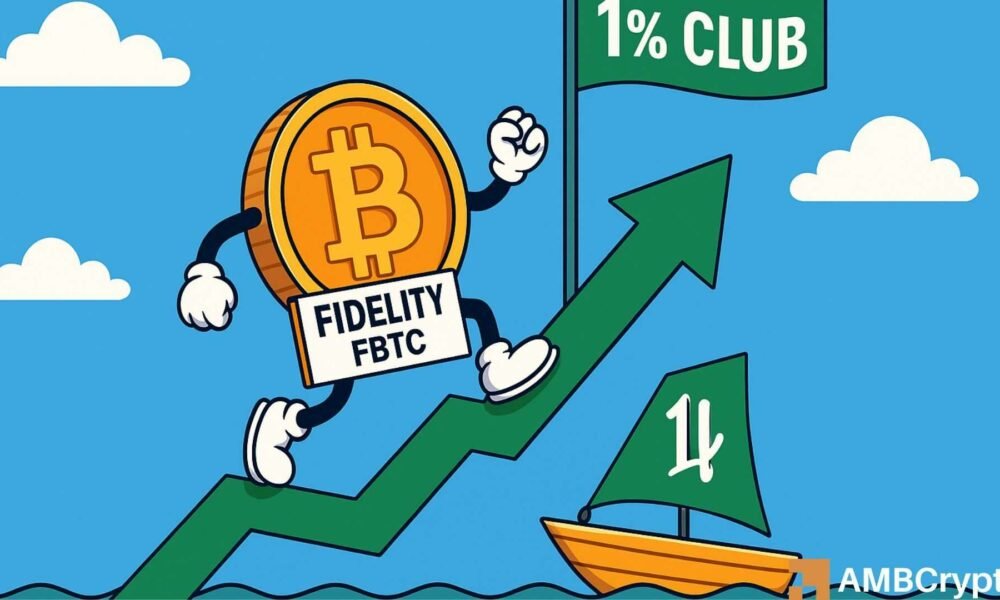Institutional Demand and the Bitcoin ETF Landscape: A Closer Look at Fidelity and BlackRock
The Bitcoin (BTC) market is experiencing a notable resurgence, particularly with the introduction of exchange-traded funds (ETFs). Fidelity currently holds an impressive 199,493 BTC, translating to about 1.02% of the total supply of 21 million coins, solidifying its position as one of the largest institutional investors in Bitcoin. This puts Fidelity just behind BlackRock’s iShares Bitcoin Trust (IBIT), which holds approximately 692,887 BTC, representing around 3.3% of the total supply. Both firms are leading the charge in institutional Bitcoin accumulation, but the dynamics of their ETF inflows reveal critical insights into the market direction and future growth potential.
As of July 3rd, 2023, Bitcoin ETFs are witnessing a fresh wave of demand, exemplified by a substantial daily inflow of $601.94 million. Notably, Fidelity’s BTC ETF, known as FBTC, has outperformed IBIT in attracting investor interest. FBTC garnered inflows of $237.13 million by the end of July 4th, compared to IBIT’s $224.53 million. This trend indicates a potential shift in institutional preference, with Fidelity emerging as a leading choice for investors looking to gain exposure to Bitcoin through regulated financial products.
The first half of 2023 displayed a remarkable increase in institutional demand for Bitcoin, particularly within Q2, as ETFs acquired a total of 111,411 BTC, marking an 8% increase in cumulative holdings. However, it was corporate entities, particularly Strategy (formerly MicroStrategy), that significantly outpaced the ETF sector by acquiring 131,000 BTC, an 18% rise in their overall holdings. This discrepancy highlights a growing trend of corporate treasuries actively integrating Bitcoin into their balance sheets, driven by a belief in its long-term value and inflation hedge properties.
When comparing Fidelity’s growth to BlackRock’s, some interesting observations arise. According to data from Fintel, while IBIT experienced a 9% increase in institutional holders, FBTC only saw a 2.6% growth in the early days of Q3. This suggests that more substantial institutional players are choosing to align their portfolios with BlackRock, which may reflect varying degrees of market confidence or differing investment strategies. Despite Fidelity’s strong performance, it appears that BlackRock is gaining traction among institutional investors.
While the demand for Bitcoin ETFs and corporate treasury accumulation paints a positive picture, the broader market dynamics tell a more nuanced story. Recent analytics from CryptoQuant noted that overall Bitcoin demand has seen a contraction, with the pool of demand dropping to approximately 857,000 BTC. This reduction in demand is occurring despite the influx of institutional purchases, raising concerns about the sustainability of Bitcoin’s upward price trajectory. The analytics firm indicates that the overall demand contraction is currently outpacing the influence of ETFs and corporate purchases, which may limit price rallies in the short term.
Amid these developments, Bitcoin’s market value fluctuated, hitting a peak of $110,500 on July 3rd before settling at around $108,800. Despite the impressive inflows and growing institutional interest, CryptoQuant emphasizes that these purchases alone are insufficient to propel prices to new all-time highs. It stresses the importance of a more robust and widespread demand growth to support significant price advancements moving forward.
In conclusion, the Bitcoin ETF landscape is evolving rapidly, led by players like Fidelity and BlackRock. While institutional demand remains strong, the overall contraction in market demand continues to present challenges. Investors eagerly await the next moves by large institutions and the potential for renewed interest that could drive Bitcoin prices higher in the future. The interplay between ETF growth, corporate treasury purchases, and broader market dynamics will ultimately dictate the trajectory of Bitcoin as it meanders through this volatile environment.


